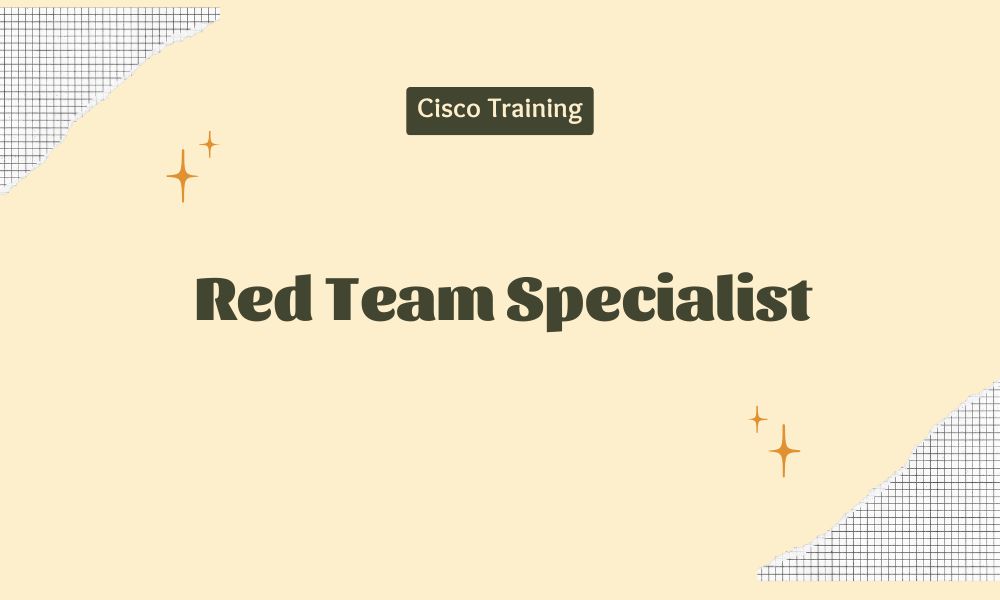TRUSTED BY THE SMARTEST TEAMS IN THE WORLD FOR CERTIFIED CANDIDATES
SPOTO Blogs
Useful learning materials to become certified IT personnel
-
- 605
- SPOTO
- 2025-06-26 16:13
-
- 937
- SPOTO
- 2025-06-26 16:04
-
- 689
- SPOTO
- 2025-06-25 14:16
-
- 543
- SPOTO
- 2025-06-25 11:12
-
- 945
- SPOTO
- 2025-06-24 12:02
-
- 722
- SPOTO
- 2025-06-23 15:35
-
- 690
- SPOTO
- 2025-06-23 15:21
-
- 711
- SPOTO
- 2025-06-20 16:02
-
- 535
- SPOTO
- 2025-06-20 15:46
TRUSTED BY THE SMARTEST TEAMS IN THE WORLD FOR CERTIFIED CANDIDATES
SPOTO Blogs
Useful learning materials to become certified IT personnel
-
- 605
- SPOTO
- 2025-06-26 16:13
Table of Contents1. What is a Computer programmer?2. How much does a Computer programmer Make?4. What Are the Qualifications to Become a Computer programmer?5. Similar Occupations of Computer programmers This article will introduce you to what a Computer programmers is, the career information of a Computer programmers and the necessary conditions to become a Computer programmers.By reading this article, you will gain an in-depth understanding of the profession of Computer programmers. 1. What is a Computer programmer? A computer programmer is a professional technician who writes, designs and develops codes and scripts that can be recognized and run by computers to ensure the normal operation of computer systems or software programs. Other job duties for a Computer programmer may include the following: Computer programmers first need to convert the program design plans developed by software engineers or designers into computer executable code; at the same time, you will also master at least one or more programming languages ​​(such as C++, JavaScript, Python, etc.) so that you can write and maintain efficient software. Secondly, computer programmers also need to make good use of code libraries and integrated development environments (IDEs) to simplify the development process and improve coding efficiency through automated tools. In addition, during the development process, they must continue to test the program, find and fix bugs in a timely manner, to ensure the stability and performance reliability of the application. In addition, when errors occur in the system, computer programmers need to troubleshoot and tune, and work closely with engineering, testing or security teams. 2. How much does a Computer programmer Make? According to data from ZipRecruiter on June 18, 2025, the average annual salary for computer programmers in the United States is $64,974. That's about $31.24 per hour. That's equivalent to $1,249 per week or $5,414 per month. The highest annual salary can be as high as $95,500 and as low as $33,000, but most computer programmers currently make between $50,500 and $80,000 per year, with the highest earners in the United States making up to $87,000 per year. The average salary range for computer programmers varies widely (up to $29,500), which means they may have many opportunities for advancement and pay increases depending on skill level, location, and years of experience. 3. Job Outlook of Computer programmer The job market demand for computer programmers is affected by changes in the economic cycle, but is generally stable.According to statistics from the U.S. Bureau of Labor Statistics, the employment rate of computer programmers is expected to decline by 10% from 2023 to 2033. However, despite the decline in employment, it is expected that there will be an average of about 6,400 computer programmer vacancies per year in the next decade. All of these vacancies are expected to fill the workforce that changes careers or exits the labor market (such as retirement). 4. What Are the Qualifications to Become a Computer programmer? (1) Obtain a Bachelor's Degree Since the work of computer programmers mainly revolves around computer network systems, having the necessary knowledge of computer networks is the basis for entry. Computer programmers usually need a bachelor's degree in network engineering, computer science, or IT-related fields to enter the industry. (2) Develop professional skills Computer programmers often need to have a solid foundation in computer and software engineering principles to ensure the smooth progress of their work. First of all, proficiency in languages ​​such as Java, C++, and Python is a basic skill for computer programmers, and a solid understanding of network protocols and technologies is required, such as the ability to skillfully integrate and call various network APIs (such as RESTful API, gRPC, NetConf/YANG, SNMP, etc.). Secondly, strong network and mathematical analysis capabilities, the ability to solve various network problems, and team communication capabilities are essential to identifying and solving network-related problems and effectively working with cross-functional teams. Finally, computer programmers with extensive experience in high-speed, highly scalable network architectures (DPDK, RDMA, hardware offload, network virtualization) are usually given priority in the application process. (3) Earn Industry Certifications Obtaining a certification that is highly recognized by the industry can prove your professional ability and ability to perform the position, and can also enhance your competitiveness in the workplace. Therefore, we recommend that you obtain the CCNP Data Center certification.This certification can certifiy your know-how to implement core data center technologies including network, compute, storage, automation, and security. Be the data center networking go-to expert with the Cisco Certified Network Professional (CCNP) Data Center certification. 5. Similar Occupations of Computer programmers Software developer Data scientist Mobile app developer Computer programmer Systems analyst Programmer analyst Database administrator Front-end developer Computer systems engineer Web developer -
- 937
- SPOTO
- 2025-06-26 16:04
Table of Contents1. What is a Storage Engineer?2. How much does a Storage Engineer Make?3. Job Outlook of Storage Engineer4. What Are the Qualifications to Become a Storage Engineer?5. Similar Occupations of Storage Engineer This article will introduce you to what a Storage Engineer is, the career information of a Storage Engineer and the necessary conditions to become a Storage Engineer.By reading this article, you will gain an in-depth understanding of the profession of Storage Engineer. 1. What is a Storage Engineer? A storage engineer is responsible for designing, implementing and maintaining an enterprise or organization's data storage system and providing more reasonable data storage solutions based on actual conditions to protect the security and stability of data assets. Other job duties for a Storage Engineer may include the following: As a storage engineer, you need to be fully responsible for the design and implementation of the enterprise storage architecture, and continuously monitor its performance and capacity changes for prediction and optimization; in addition, storage engineers must manage SAN, NAS and cloud storage environments to ensure that data backup and recovery mechanisms are in place to maintain data integrity and security. At the same time, storage engineers need to write and maintain configuration documents, automated operation and maintenance scripts, and regularly participate in audits to ensure compliance standards. In their daily work, they will also work closely with network, security, development and other teams to resolve storage failures and evaluate the feasibility of new technologies, ultimately ensuring that the organization's data infrastructure is efficient, secure and highly available. 2. How much does a Storage Engineer Make? According to data from ZipRecruiter on June 18, 2025, the average hourly salary for storage engineers in the United States is $56.21. The hourly salary can be as high as $83.17 and as low as $10.34, but most storage engineers currently earn between $46.63 and $66.35 nationwide. The average salary range for storage engineers varies widely (up to 19%), which means there may be many opportunities for advancement and pay increases for storage engineers depending on skill level, location, and years of experience. 3. Job Outlook of Storage Engineer Overall, the Job Outlook of Storage Engineer is optimistic and strong.According to the U.S. Bureau of Labor Statistics, overall employment in the architecture and engineering industries is projected to grow faster than the average for all occupations between 2023 and 2033. These industries are expected to have an average of about 195,000 job openings each year due to job growth and the need to replace workers who permanently leave the industry. 4. What Are the Qualifications to Become a Storage Engineer? (1) Obtain a Bachelor's Degree Based on a large amount of job recruitment information, this article found that to obtain a storage engineer position, most companies require job seekers to have at least a bachelor's degree in engineering, computer science or any related disciplines. (2) Develop professional skills Focus on mastering specific storage technologies, virtualization, and cloud storage platforms. Accumulating expertise in these areas will make you an indispensable talent in the digital transformation of your enterprise. (3) Earn Industry Certifications Obtaining a certification that is highly recognized by the industry can prove your professional ability and ability to perform the position, and can also enhance your competitiveness in the workplace. Therefore, we recommend that you obtain the CCNP Data Center certification.This certification can certifiy your know-how to implement core data center technologies including network, compute, storage, automation, and security. Be the data center networking go-to expert with the Cisco Certified Network Professional (CCNP) Data Center certification. 5. Similar Occupations of Storage Engineer Systems Engineer Cloud Infrastructure Engineer Cloud Engineer SAN Engineer NAS Engineer Storage Security Analyst Infrastructure Engineer Data Center Engineer Backup and Recovery Specialist -
- 689
- SPOTO
- 2025-06-25 14:16
Table of Contents1. What is a Unified Communications Engineer?2. What does a Unified Communications Engineer do?3. Career Insights: Salary, Outlook & Related Roles4. What Are the Qualifications to Become a Unified Communications Engineer? 1. What is a Unified Communications Engineer? Unified communications engineers are professional technicians who establish, supervise and maintain communications systems and infrastructure for enterprises or organizations. They are responsible for the management and support of voice, video and data communications systems. 2. What does a Unified Communications Engineer do? Unified Communications Engineers are responsible for managing and supporting voice, video, and data communications systems, and for the deployment and configuration of unified communications systems and tools. First, they monitor the operating status of communications systems, perform maintenance, and resolve issues that arise in voice, video, and messaging systems. Second, they collaborate with other IT teams to integrate communications systems into existing infrastructure, while providing technical support and guidance to users. Finally, they keep an eye on new technology developments in the unified communications field, and keep detailed records of system configurations, operating procedures, and changes. 3. Career Insights: Salary, Outlook & Related Roles (1) Unified Communications Engineer Salary According to data from Glassdoor, the expected total salary for communications engineers is $120,111 per year, with an average annual salary of $100,802. The expected additional salary is $19,309 per year. Additional salary may include cash bonuses, commissions, tips, and profit sharing. (2) Job Outlook of Unified Communications Engineer With the popularity of remote working, enterprises' demand for unified communications solutions has increased significantly, which in turn has driven the demand for the recruitment of Unified Communications Engineers. According to research by MarketsandMarkets, the UCaaS market is expected to reach US$24.8 billion in 2024, a 50% increase from 2019. (3) Similar Occupations Voice Engineer (VoIP Engineer) Collaboration Engineer Telecommunications Engineer Video Conferencing Engineer / AV Engineer Microsoft Teams / Skype for Business Engineer Cisco Collaboration Specialist / Engineer Contact Center Engineer (UCCE/UCCX) Network Engineer (with VoIP focus) IT Support Engineer (with UC specialization) Solutions Architect (UC / Collaboration) 4. What Are the Qualifications to Become a Unified Communications Engineer? (1) Obtain a Bachelor's Degree The recruitment of Unified Communications Engineer often requires a bachelor's degree in Computer Science, Electrical Engineering, Information Technology or a related technical field. In addition, relevant professional skills and internship experience are also very important, so job seekers are required to learn relevant practical experience during school. (2) Develop professional skills Unified Communications Engineers need to possess a variety of technical and analytical skills required to design, deploy, and maintain integrated communications systems. Key capabilities include proficiency in VoIP technology, Cisco Unified Communications platforms (such as CUCM, Unity Connection, and IM & Presence), and video conferencing solutions. Secondly, they also need to be proficient in the management of enterprise network infrastructure, monitoring complex systems for unified communications, and dedicated troubleshooting. Finally, they also need to master some other technical capabilities, which usually include working knowledge of Linux systems, TCP/IP protocols, switches and routers, and radio frequency communications. The combination of communication system expertise and IT infrastructure management makes unified communications engineers essential to ensuring a reliable, scalable, and secure enterprise collaboration environment. (3) Earn Industry Certifications Experience in the Unified Communications industry is crucial in your job search, so you should receive on-the-job training. Many employers want to hire people who are certified in a specific company. Cisco is one of the most common systems, so getting a Cisco certification will give you the best chance of success in the job market.CCIE Collaboration certification demonstrates your advanced skills in planning, designing, implementing, operating, and optimizing complex enterprise collaboration solutions. Earn the Cisco Certified Internetwork Expert (CCIE) Collaboration certification to show employers your expertise in Unified Communications. -
- 543
- SPOTO
- 2025-06-25 11:12
Table of Contents1. What is an Optimization Engineer?2. How much does an Optimization Engineer Make?3. Job Outlook of Optimization Engineer4. What Are the Qualifications to Become an Optimization Engineer?5. Similar Occupations of Optimization Engineer6. Start with us to start down your ideal career path This article will introduce you to what an Optimization Engineer is, the career information of an Optimization Engineer and the necessary conditions to become an Optimization Engineer.By reading this article, you will gain an in-depth understanding of the profession of Optimization Engineer. 1. What is an Optimization Engineer? An Optimization Engineer is someone who is responsible for optimizing and upgrading the operating processes of an existing enterprise's products, services, or networks in order to improve the enterprise's work efficiency and profitability. Other job duties for an Optimization Engineer may include the following: Optimization engineers are mainly responsible for analyzing, designing and improving the efficiency and effectiveness of enterprises in product manufacturing, process operation or system operation. First of all, they need to use data analysis and modeling tools to find system bottlenecks and propose specific improvement strategies. Help companies improve production capacity and quality while reducing costs. In addition, they often work with cross-departmental teams, including products, engineering, supply chain and IT, to ensure that optimization solutions can be smoothly integrated and continuously track results. Therefore, job seekers need to have solid mathematical and statistical knowledge, be familiar with engineering software or data tools (such as Python, MATLAB, R or simulation tools), and have strong problem-solving and logical reasoning skills. Finally, good communication skills are also one of the necessary conditions for optimization engineers in order to effectively convey technical solutions to non-technical departments. 2. How much does an Optimization Engineer Make? According to the data of ZipRecruiter website on June 17, 2025, the average hourly wage of optimization engineers in the United States is $59.65. The hourly wage of optimization engineers can be as high as $81.73 and as low as $40.62, but the current salary of most optimization engineers in the United States is between $43.27 and $73.56. 3. Job Outlook of Optimization Engineer According to statistics from the U.S. Bureau of Labor Statistics on April 18, 2025, the employment of industrial engineers is expected to grow by 12% from 2023 to 2033, which is much higher than the average growth rate of all occupations. This set of data shows that it is expected that the demand for experts who are proficient in process and system optimization will increase in all walks of life in the future. 4. What Are the Qualifications to Become an Optimization Engineer? (1) Obtain a Bachelor's Degree The position of Optimization Engineer often requires job seekers to have a bachelor's degree in engineering or technology or other related majors. (2) Develop professional skills The skills required for an Optimization Engineer include the following: data analysis and mathematical modeling capabilities, optimization methods (such as linear programming, simulation, etc.), process improvement experience, familiarity with tools such as Python, MATLAB or statistical software, system thinking and problem-solving skills, and good cross-departmental communication and project collaboration capabilities. (3) Earn Industry Certifications Obtaining a certification that is highly recognized by the industry can prove your professional ability and ability to perform the position, and can also enhance your competitiveness in the workplace. Therefore, we recommend that you obtain the Cisco CCNP Service Provider certification certification.After obtaining CCNP Service Provider (Cisco Certified Network Professional - Service Provider) certification, you will have the professional ability to plan, implement, operate and optimize network systems in service provider network environments (such as telecommunications, broadband, backbone networks). Most of the career positions corresponding to this certification are concentrated in operators, ISPs, data centers, cloud service providers, and network departments of large enterprises. 5. Similar Occupations of Optimization Engineer Software Engineering Business Analyst Operations Research Analyst Process Control Engineer Supply Chain Engineer Industrial Engineer Manufacturing Engineer Quality Engineer Performance Engineer 6. Start with us to start down your ideal career path SPOTO places a high priority on providing the most current and accurate study materials for its users. The exam dumps are regularly updated to reflect any changes made by Oracle to its certification exams.Oracle updates its exams from time to time, and SPOTO keeps a keen eye on these changes to ensure that their dumps are aligned with the latest exam formats and content. Updates are typically made promptly after any revisions to Oracle's certification exams are published, so you can always feel confident that you are studying with the most relevant and current information available. These updates may also include new question types, changes to the structure of the exam, or adjustments in the weighting of topics. Therefore, you can rest assured that the materials you are studying with are reflective of the latest Oracle certification exam requirements. -
- 945
- SPOTO
- 2025-06-24 12:02
Table of Contents1. What is an Ip/Mpls Network Engineer?2. How much does an Ip/Mpls Network Engineer Make?3. Job Outlook of Ip/Mpls Network Engineer4. What Are the Qualifications to Become an Ip/Mpls Network Engineer?5. Similar Occupations of Ip/Mpls Network Engineer6.Start your ideal career path with SPOTO This article will introduce you to what an Ip/Mpls Network Engineer is, the career information of an Ip/Mpls Network Engineer and the necessary conditions to become an Ip/Mpls Network Engineer.By reading this article, you will gain an in-depth understanding of the profession of Ip/Mpls Network Engineer. 1. What is an Ip/Mpls Network Engineer? Ip/Mpls Network Engineer refers to a professional IT personnel who is responsible for developing, designing, implementing and maintaining the IP and MPLS-based network systems of an enterprise or organization. Other job duties for an Ip/Mpls Network Engineer may include the following: Design and implement complex network solutions, including MPLS networks, to meet customer needs and ensure network reliability Perform necessary network monitoring on a daily basis to ensure safe operation of network systems Troubleshoot and repair IP/MPLS network hardware and network IP/MPLS network issues within the organization or at customer sites As technology continues to advance, it is critical to stay up to date on the latest developments in IP networks and related technologies Maintain and deploy multi-protocol layer data transmission reporting tools Serve as an upgrade point for client VPN implementations 2. How much does an Ip/Mpls Network Engineer Make? According to ZipRecruiter's June 16, 2025 data, the average annual salary for IP Mpls network engineers in the United States is $109,040. That's about $52.42 per hour. That's equivalent to $2,096 per week or $9,086 per month. The highest annual salary can be as high as $158,000 and as low as $31,000, but most current salaries for IP Mpls network engineers working from home range from $89,000 to $133,500, with the highest earners in the United States making up to $143,000 per year. The average salary range for IP Mpls network engineers working from home varies widely (up to $44,500), which means there may be many opportunities for advancement and pay increases based on skill level, location, and years of experience. 3. Job Outlook of Ip/Mpls Network Engineer The demand for Ip/Mpls network engineers is expected to increase through 2025 and beyond. This is due to the increasing reliance on computer networks, the need for organizations and businesses to protect their networks from cyber threats, and the ability of networks to collect and analyze data. All of these reasons suggest that the demand for network engineers will increase.According to the U.S. Bureau of Labor Statistics, computer and IT occupations are expected to grow at a much faster-than-average rate from 2023 to 2033, with 356,700 job openings each year. The 2024 State of the Technology Workforce report shows that technology jobs will grow from 6 million in 2024 to 7.1 million in 2034. 4. What Are the Qualifications to Become an Ip/Mpls Network Engineer? (1) Obtain a Bachelor's Degree In the job postings for Ip/Mpls Network Engineer positions, companies often require job seekers to have at least a bachelor's degree in telecommunications, computer science, information technology, electronics or a related discipline. (2) Develop professional skills As an IP/MPLS network engineer, you must build on a solid foundation of network protocols (such as IP, Ethernet, TCP/IP, ARP, VLAN, OSPF, BGP, etc.), because the work content requires a comprehensive understanding of the entire network framework. On this basis, MPLS is the core capability, which uses the label mechanism to achieve efficient path forwarding and VPN service deployment, while supporting traffic engineering. Then, they also need to be proficient in the configuration of routers and switches (such as Cisco, Juniper, Nexus), and have the ability to handle technical details such as HSRP, STP, ACL, QoS, etc. In addition, network troubleshooting is a high-frequency item in daily work, requiring engineers to be able to deeply analyze data flows, identify fault paths, and solve complex problems through tools (such as Wireshark). In actual projects, it is also necessary to master WAN architecture design, work area division and capacity planning, and cooperate with business rules, permission control and scheduling strategies to ensure resource optimization and efficient operation. Finally, as the network evolves, security and automation cannot be ignored. You should be aware of the security vulnerabilities of MPLS networks (such as label spoofing and traffic interception) and have the ability to use APIs, script development, or plug-ins. (3) Earn Industry Certifications Obtaining a certification that is highly recognized by the industry can prove your professional ability and ability to perform the position, and can also enhance your competitiveness in the workplace. Therefore, we recommend that you obtain the Cisco CCNP Service Provider certification certification.After obtaining CCNP Service Provider (Cisco Certified Network Professional - Service Provider) certification, you will have the professional ability to plan, implement, operate and optimize network systems in service provider network environments (such as telecommunications, broadband, backbone networks). Most of the career positions corresponding to this certification are concentrated in operators, ISPs, data centers, cloud service providers, and network departments of large enterprises. 5. Similar Occupations of Ip/Mpls Network Engineer Network Administrator Network Analyst Network Consultant Cloud Network Engineer Network Security Engineer IT Support Specialist Technical Support Engineer Juniper Network Engineer Network Architect 6.Start your ideal career path with SPOTO SPOTO places a high priority on providing the most current and accurate study materials for its users. The exam dumps are regularly updated to reflect any changes made by Oracle to its certification exams.Oracle updates its exams from time to time, and SPOTO keeps a keen eye on these changes to ensure that their dumps are aligned with the latest exam formats and content. Updates are typically made promptly after any revisions to Oracle's certification exams are published, so you can always feel confident that you are studying with the most relevant and current information available. These updates may also include new question types, changes to the structure of the exam, or adjustments in the weighting of topics. Therefore, you can rest assured that the materials you are studying with are reflective of the latest Oracle certification exam requirements. -
- 722
- SPOTO
- 2025-06-23 15:35
Table of Contents1. What is a NOC Engineer?2. What does a NOC Engineer do?3. Career Insights: Salary, Outlook & Related Roles4. What Are the Qualifications to Become a NOC Engineer? This article will introduce you to what a NOC Engineer is, the career information of a NOC Engineer and the necessary conditions to become a NOC Engineer.By reading this article, you will gain an in-depth understanding of the profession of NOC Engineer. 1. What is a NOC Engineer? A Network Operations Center (NOC) engineer is a network specialist who monitors a business or organization's large computer networks and servers for faults from a central location or via satellite. 2. What does a NOC Engineer do? NOC engineers, or network operations center engineers, are responsible for resolving server and network issues through ongoing troubleshooting and network support. As a NOC engineer, you need to work in the network management center to quickly and efficiently resolve any issues that may arise and ensure stable connections for clients. Secondly, they need to monitor and control all issues that arise and keep a database of historical issues for faster problem resolution and continuous software development. Finally, NOC engineers need to use their in-depth knowledge of information technology, including an understanding of malware and security issues, to solve problems for customers and company servers. 3. Career Insights: Salary, Outlook & Related Roles (1) Pre-Sales Engineer Salary According to ZipRecruiter data on June 15, 2025, the average hourly wage for a Noc engineer in the United States is $39.45. The hourly wage can be as high as $64.90 and as low as $14.66, but most night shift engineers currently make between $28.85 and $49.76 across the United States. This means there may be many opportunities for advancement and pay increases depending on skill level, location, and years of experience. (2) Job Outlook of NOC Engineer According to data from the Zippia website, the employment growth rate of NOC engineers is expected to be 5% between 2018 and 2028. There are 64,038 active NOC engineer job vacancies in the United States, and the demand for this position in the job market is rising. (3) Similar Occupations Network Engineer Systems Engineer Network Administrator Technical Support Engineer NOC Technician Cybersecurity Analyst Information Technology Specialist/Manager 4. What Are the Qualifications to Become a NOC Engineer? (1) Obtain a Bachelor's Degree The position of NOC Engineer requires applicants to have necessary Internet information technology. Therefore, it is best for job seekers to have a bachelor's degree in information technology or computer science. (2) Develop professional skills First, NOC engineers must have a solid foundation in network security knowledge, including an in-depth understanding of operating systems (Windows, Linux), network protocols, threat detection methods, etc. Second, proficiency in SIEM tools (such as Splunk, QRadar) and log analysis is one of the core skills required for this position; Third, NOC engineers also need to have good incident response and investigation capabilities, and be able to quickly identify and handle security incidents. Finally, with the continuous development of information technology, continuous learning ability, communication and collaboration skills, and keen insight into security trends are also indispensable qualities for NOC engineers. (3) Earn Industry Certifications Obtaining a certification that is highly recognized by the industry can prove your professional ability and ability to perform the position, and can also enhance your competitiveness in the workplace. Therefore, we recommend that you obtain the Cisco CCIE Enterprise Wireless certification.With CCIE Enterprise Wireless, you can be qualified for a variety of senior network positions, especially in the design, implementation, and optimization of enterprise wireless networks. -
- 690
- SPOTO
- 2025-06-23 15:21
Table of Contents1. What is a Wireless Product Manager?2. Wireless Product Manager Salary3. Job Outlook of Wireless Product Manager4. Similar Occupations5. What Are the Qualifications to Become a Wireless Product Manager? This article will introduce you to what a Wireless Product Manager is, the career information of a Wireless Product Manager and the necessary conditions to become a Wireless Product Manager.By reading this article, you will gain an in-depth understanding of the profession of Wireless Product Manager. 1. What is a Wireless Product Manager? Wireless Product Managers are technical managers responsible for wireless communication-related products. They are key positions for strategic planning, market positioning, and cross-departmental collaboration throughout the product life cycle. Wireless Product Managers need to have a deep understanding of wireless network technologies (such as 802.11ax/Wi-Fi 6/6E, spectrum management, RF design, etc.) as well as user needs and industry trends. They are responsible for developing product roadmaps, writing product requirement documents (PRDs), and promoting the R&D team to develop wireless products that meet market demand. At the same time, they work closely with sales, marketing, customer success and other teams to ensure that products have differentiated advantages in the highly competitive market. 2. Wireless Product Manager Salary According to ZipRecruiter's June 15, 2025 data, the average annual salary for wireless product managers in the United States is $159,405. That's about $76.64 per hour. That's equivalent to $3,065 per week or $13,283 per month. The highest annual salary can be as high as $197,000 and as low as $51,500, but most wireless product managers currently make between $141,000 and $197,000, with the highest earners in the United States making $197,000. The average salary range for wireless product managers varies widely (up to $56,000), which means there may be many opportunities for advancement and pay increases depending on skill level, location, and years of experience. 3. Job Outlook of Wireless Product Manager According to the U.S. Bureau of Labor Statistics, computer and IT occupations are expected to grow at a much faster-than-average rate from 2023 to 2033, with 356,700 job openings each year. The 2024 State of the Technology Workforce report shows that technology jobs will grow from 6 million in 2024 to 7.1 million in 2034. With the increasing popularity and application of wireless technology and the increasing reliance of enterprises on wireless technology, the demand for Wireless Product Manager positions in the future job market will continue to rise. 4. Similar Occupations Technical Product Manager Product Owner Group Product Manager Head of Product Product Specialist Product Marketing Manager Director of Product Management Vice President of Products Chief Product Officer 5. What Are the Qualifications to Become a Wireless Product Manager? (1) Obtain a Bachelor's Degree During the recruitment process, this position often requires job seekers to have a bachelor's degree in a related field such as engineering, computer science, or business. (2) Develop professional skills First of all, job seekers should have telecom-related work experience and be familiar with mobile network architecture and telecom technology and knowledge. Secondly, strong learning ability, active thinking, diligence, self-motivation, teamwork spirit, etc. are also soft skills required for this position. Finally, job seekers need to understand GSM/WCDMA/LTE, 4.5G products. Familiar with Microsoft Office 2010 (word, excel, PPT), especially the use of Excel formulas. (3) Earn Industry Certifications Obtaining a certification that is highly recognized by the industry can prove your professional ability and ability to perform the position, and can also enhance your competitiveness in the workplace. Therefore, we recommend that you obtain the Cisco CCIE Enterprise Wireless certification.With CCIE Enterprise Wireless, you can be qualified for a variety of senior network positions, especially in the design, implementation, and optimization of enterprise wireless networks. -
- 711
- SPOTO
- 2025-06-20 16:02
Table of Contents1. What is an Red Team Specialist?2. What does an Red Team Specialist do?3. How much does an Red Team Specialist Make?4. Job Outlook of Red Team Specialist5. Similar Occupations of Red Team Specialist6. What Are the Qualifications to Become an Red Team Specialist ? This article will introduce you to what an Red Team Specialist is, the career information of an Red Team Specialist and the necessary conditions to become an Red Team Specialist.By reading this article, you will gain an in-depth understanding of the profession of Red Team Specialist. 1. What is an Red Team Specialist? Red Team Specialist is information security technician who simulate real-world attacks to test an organization's defenses, identify vulnerabilities, and improve their overall security posture. They use advanced techniques and tools to simulate adversaries and explore potential entry points and weaknesses in systems, networks, and applications. 2. What does an Red Team Specialist do? Red team experts usually need to lead the technical staff of the red team to design, arrange and implement attack simulations, and after the attack simulation is over, they usually provide a detailed report to the organization, outlining the vulnerabilities found and providing solution suggestions. This can help organizations improve their defense capabilities and prepare for potential attacks. Here are the specific tasks: simulate real-world cyber attacks on organizational systems and defenses; test the organization's defense capabilities and identify weaknesses or vulnerabilities that real attackers may exploit; use various strategies and techniques to imitate methods that attackers may use, such as social engineering and network penetration testing; try to break through the organization's defenses and gain access to sensitive data or systems; provide a detailed report to the organization, outlining the vulnerabilities found and providing suggestions for solving these vulnerabilities; help organizations improve their defense capabilities and better respond to potential attacks.Overall, the goal of red team experts is to provide organizations with a realistic test of their defenses and help them identify and resolve any vulnerabilities before real attackers exploit them. 3. How much does an Red Team Specialist Make? The average annual salary for a Red Team Operator in the United States is $38,627. According to ZipRecruiter data as of June 12, 2025, the average hourly wage for a Red Teamer in California is $25.40. Salaries range from as high as $71.88 to as low as $10.44, but the majority of Red Team salaries in California currently range between $15.19 and $23.70. The average salary range for a Red Teamer varies greatly, which suggests there may be many opportunities for advancement and increased pay based on skill level, location and years of experience. 4. Job Outlook of Red Team Specialist As enterprises and organizations face more and more cyber dangers and the difficulty of detecting cyber threats increases, the job market demand for red team experts is increasing year by year. According to statistics from the U.S. Bureau of Labor Statistics, it is expected that information security analyst positions will grow by 33% between 2022 and 2033, including professional positions such as red team experts. 5. Similar Occupations of Red Team Specialist Penetration Tester Security Analyst Security Engineer Cybersecurity Consultant Ethical Hacker SOC Analyst Red Team Analyst Threat Hunter Cloud Security Engineer 6. What Are the Qualifications to Become an Red Team Specialist ? (1) Obtain a Bachelor's Degree A bachelor's degree in computer science, information systems, cybersecurity, a related technical field, or equivalent practical experience is essential to becoming a red team expert, but advanced degrees can further enhance your prospects. (2) Develop professional skills Red team experts need to have solid network security knowledge and offensive testing capabilities. They should usually be familiar with penetration testing tools (such as Metasploit, Cobalt Strike) and have scripting skills (Python, PowerShell, etc.). In addition, they need to understand operating systems, network protocols, and vulnerability exploitation mechanisms, and be able to design and execute simulated attack scenarios. Communication skills are also critical because they need to provide detailed reports and improvement suggestions to the blue team and management. Finally, in terms of soft skills, the work of red team experts emphasizes the attacker's perspective, so strategic thinking, innovation, and teamwork are also very important. (3) Earn Industry Certifications Obtaining a certification that is highly recognized by the industry can prove your professional ability and ability to perform the position, and can also enhance your competitiveness in the workplace. Therefore, we recommend that you obtain the Cisco CCIE Security certification certification.This certification demonstrates your mastery of the planning, design, deployment, operation, and optimization of complex enterprise security network solutions. -
- 535
- SPOTO
- 2025-06-20 15:46
Table of Contents1. What is a Penetration Tester?2. What does a Penetration Tester do?3. How much does a Penetration Tester Make?4. Job Outlook of Penetration Tester5. What Are the Qualifications to Become a Penetration Tester ?6. Similar Occupations of Penetration Tester This article will introduce you to what a Penetration Tester is, the career information of a Penetration Tester and the necessary conditions to become a Penetration Tester.By reading this article, you will gain an in-depth understanding of the profession of Penetration Tester. 1. What is a Penetration Tester? Penetration Tester is an information technology technician who helps enterprises or organizations detect, identify and resolve network security vulnerabilities that affect their network systems or may damage their digital assets. 2. What does a Penetration Tester do? Penetration Testers are cybersecurity professionals who simulate hacker attacks to identify security vulnerabilities in systems, networks, and applications. They assess targets in an authorized manner, use a variety of tools and techniques to attempt to intrude to discover potential weaknesses, and then provide detailed reports and improvement recommendations to help organizations strengthen their protection measures. They play a key role in preventing corporate data leaks, network system compliance reviews, and overall cybersecurity strategies. 3. How much does a Penetration Tester Make? The estimated total annual salary for a penetration tester is $150,547, with an average annual salary of $113,389.Payscale reports that base salaries for pentesters are typically close to $90,000 per year. The lowest-paid (bottom 10%) pentesters make around $70,000 per year. The highest-paid (top 10%) pentesters can make up to $125,000 per year. Pay levels tend to be higher in metropolitan areas and leading tech hubs. 4. Job Outlook of Penetration Tester The job market demand for Penetration Testers is very large. In order to prevent the company from facing network dangers, various companies are actively seeking talents in related fields. Penetration Testers are facing a talent shortage in this field. The U.S. Bureau of Labor Statistics (BLS) includes penetration testing in the scope of responsibilities of information security analysts. According to statistics from the U.S. Bureau of Labor Statistics (BLS), the demand for information security analysts will increase by 35% from 2021 to 2031. The BLS also reported that the median annual salary for information security analysts in 2021 was $102,600. 5. What Are the Qualifications to Become a Penetration Tester ? (1) Obtain a Bachelor's Degree A bachelor's degree in computer science, cybersecurity, or a related field, a related technical field, or equivalent practical experience is essential to becoming a Penetration Tester. Programs in these degree programs can provide relevant courses in the skills required for the position. (2) Develop professional skills Due to the particularity of the Penetration Tester profession, employers often require job seekers to have corresponding computer network system skills when recruiting. First, they need to understand specific computer languages, such as Python, Powershell, Golang, and Bash. Secondly, Penetration Testers also need to have experience in network protocols, Windows/Linux/macOS, firewalls, IPS/IDS systems, virtual machine environments, data encryption, and iOS, Android, and mobile operating systems. In order to ensure the compliance and legality of corporate network systems. Finally, it is also crucial for Penetration Testers to understand common penetration testing and application security tools, including Aircrack-ng, Kaduu, Kali, Metasploit, and Burp Suite. (3) Earn Industry Certifications Obtaining a certification that is highly recognized by the industry can prove your professional ability and ability to perform the position, and can also enhance your competitiveness in the workplace. Therefore, we recommend that you obtain the Cisco CCIE Security certification certification.This certification demonstrates your mastery of the planning, design, deployment, operation, and optimization of complex enterprise security network solutions. 6. Similar Occupations of Penetration Tester Security Analyst Security Architect Cybersecurity Consultant Vulnerability Analyst Ethical Hacker Security Software Developer Threat Intelligence Analyst Incident Responder Information Security Manager Network Security Engineer














